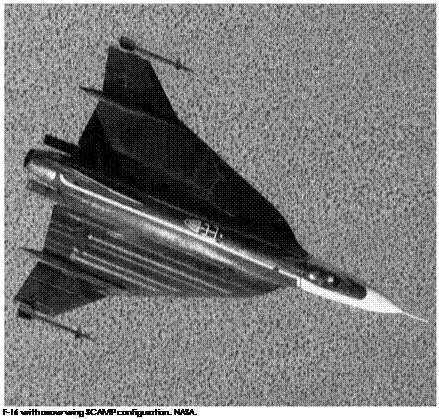Shaping NASA Supersonic Cruise Research for the Post-SST Era
With the demise of the national SST program and the popular shift away from a supersonic airliner, a principal reason for funding supersonic research disappeared. Nevertheless, NASA’s mission to advance aeronautics research dictated that a program should continue, although not necessarily at the previous urgency. It was obvious from the XB-70 flight test and the SST debate that the integration of the elements of a supersonic cruiser was more critical than for a subsonic aircraft. The shape of the aircraft dictated external shock wave formation, which not only changed drag but also had a major effect on the sonic boom footprint on the ground. The shock waves within the air-breathing engine inlet had a major impact on propulsive efficiency, which affected range and had operational impact if the inlet was not operating at optimal efficiency. To integrate these elements in the design process required better knowledge of how accurate the engineers design tools were. Wind tunnel fidelity in predicting results when the models did not necessarily have the temperature or aeroelastic characteristics of a full-sized aircraft at the high-temperature cruise state required investigation. The same could be said for propulsion wind tunnel models.
NASA developed a research program known initially as Advanced Supersonic Technology (AST), which lasted from 1972 to 1981. (Because of political sensitivities, the name was changed to Supersonic Cruise Aircraft Research [SCAR] in 1974; the "Aircraft” word was deleted in 1979, to avoid connection with the contentious SST label, so it became SCR.)[1097]
The idea was to research the technical problems that had appeared during the SST development program and the XB-70 flight test. NASA Langley concentrated on refining a configuration for an advanced supersonic cruise aircraft, and it was postulated to have a cruise speed of Mach 2.2, matching the Concorde that was entering service. Its size, payload, and range performance were also reduced in comparison with the 1963 configurations. The configuration often shown for the SCR research resembled the Boeing 2707-300, but Langley continued to favor a refinement of the SCAT 15F, with the arrow wing as the optimum high-speed shape. Unfortunately, without variable sweep, the arrow wing was initially one of the worst low-speed shapes. Lewis Research Center studies focused on a variable cycle engine (VCE) to study optimizing engine performance, including internal aerodynamics for various phases of flight, engine noise, and exhaust emission problems. Dryden and Ames did simulator studies mainly, with some uses of the XB-70 test data followed by the YF-12 test program data.
![]() Funding for AST-SCAR-SCR was limited, mainly because of the SST fallout; nevertheless, SCAR conferences in 1976 and 1979 were well-attended and produced almost 1,000 papers.[1098] Nor was the only target application a transport. The USAF was exploring the possibility of a fighter aircraft using supersonic cruise for "global persistence” to operate deep behind the battlefront over the Central European battlefield; thus, the Air Force and its contractors were interested in optimum supersonic performance in an aircraft with limited fuel. A conference at the Air Force Academy hosted by the Air Force Flight Dynamics Laboratory in February 1976 included papers on NASA research results and contractor studies that used NASA’s arrow wing to satisfy the supersonic mission requirements. The arrow wing was shown to have superior maximum L/D over the delta wing, to the point that Lockheed studies switched to it from their SST double delta configuration.[1099]
Funding for AST-SCAR-SCR was limited, mainly because of the SST fallout; nevertheless, SCAR conferences in 1976 and 1979 were well-attended and produced almost 1,000 papers.[1098] Nor was the only target application a transport. The USAF was exploring the possibility of a fighter aircraft using supersonic cruise for "global persistence” to operate deep behind the battlefront over the Central European battlefield; thus, the Air Force and its contractors were interested in optimum supersonic performance in an aircraft with limited fuel. A conference at the Air Force Academy hosted by the Air Force Flight Dynamics Laboratory in February 1976 included papers on NASA research results and contractor studies that used NASA’s arrow wing to satisfy the supersonic mission requirements. The arrow wing was shown to have superior maximum L/D over the delta wing, to the point that Lockheed studies switched to it from their SST double delta configuration.[1099]
 |
|
General Dynamics—later Lockheed Martin Tactical Aircraft Systems (LMTAS)—worked with NASA Langley in the early 1970s in the development of its highly maneuverable F-16 Fighting Falcon fighter.[1100] As interest developed in a supersonic cruise fighter in 1977, the company teamed with Langley researchers again to design an arrow wing for its F-16. Known as the Supersonic Cruise and Maneuverability Program (SCAMP), it resulted in the construction of two company-funded aircraft designated F-16XL, which first flew in 1982. Development of an arrow wing aircraft provided an opportunity to develop the features necessary to make the design practical, especially with regard to its low – speed and high-angle-of-attack characteristics. Although USAF interest shifted to the air-to-ground mission, resulting in purchase of the larger McDonnell-Douglas (later Boeing) F-15E Strike Eagle, the two shapely F-16XLs were the first flying testbeds for the arrow wing. (NASA shared in the data from the test program and wisely put the two aircraft in storage for possible future use, for they were later used to accomplish
 |
|
notable work in refined aerodynamic studies, including supersonic laminar flow control.) The AST-SCAR-SCR program had essentially ended in 1981, as funding for NASA aeronautical research was cut because of the needs of the approaching Space Transportation System (STS, the Space Shuttle). Flight test for supersonic aircraft was too expensive. But one supersonic NASA flight-test program of the 1970s proved to be a spectacular success, one that contributed across a number of technical disciplines: the Blackbirds.










